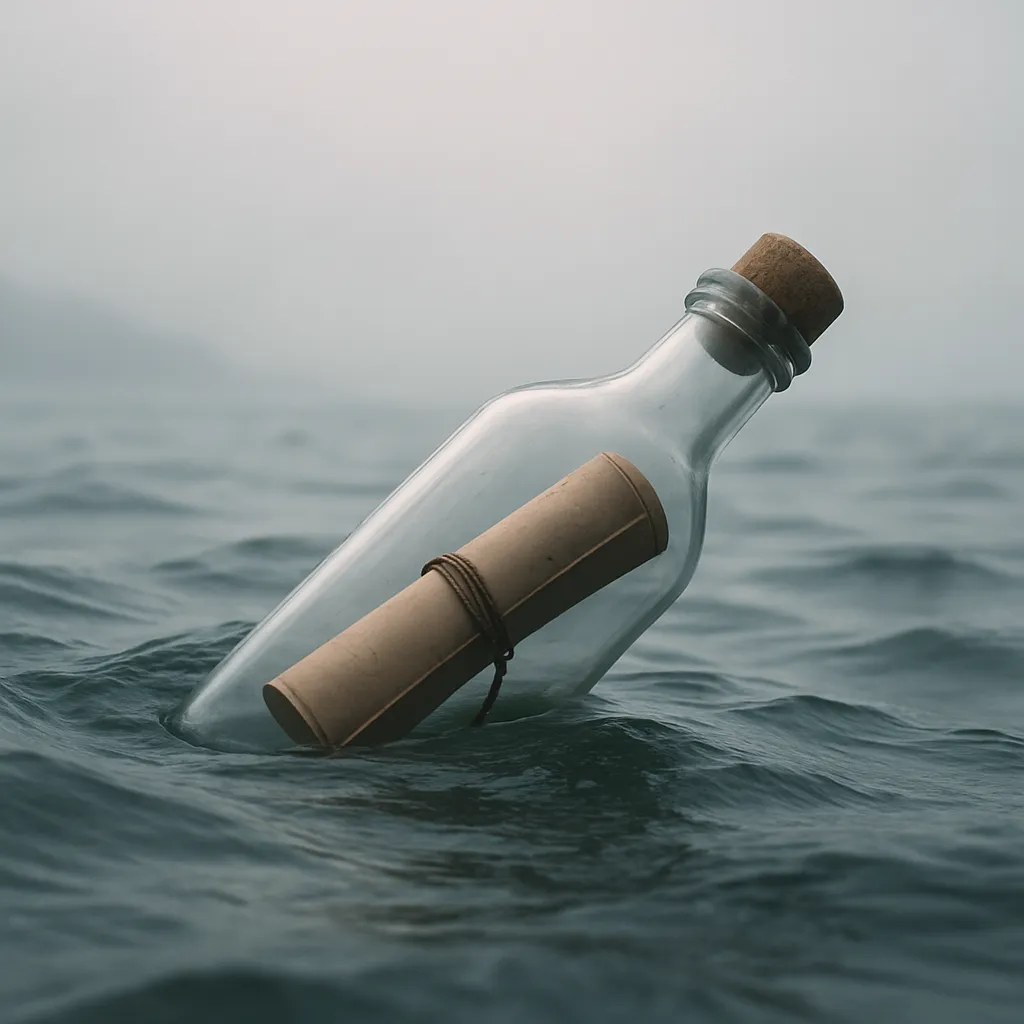
Message in a Bottle
The History of Messages in Bottles
The ocean has always held humanity’s longing—for exploration, for discovery, for connection across impossible distances. Among its many traditions, few are as enduring or poetic as the casting of messages in bottles. A gesture at once fragile and defiant, it turns the sea itself into courier, carrying words to strangers, to history, or perhaps to no one at all.
Ancient Origins
The first known message in a bottle is credited to the Greek philosopher Theophrastus around 310 BCE. Seeking to prove that the Mediterranean was fed by the Atlantic, he dropped sealed notes into the sea to trace currents. His experiment carried both science and symbolism: proof that the ocean could reveal its secrets if one learned how to ask.
Royal Espionage and Shipwrecked Prayers
Centuries later, messages at sea became entwined with empire. In 16th-century England, Queen Elizabeth I appointed an official “Uncorker of Ocean Bottles” to safeguard potentially sensitive dispatches. Unauthorized opening was punishable by death, underscoring the weight these drifting notes might bear.
Some messages came not from courts but from desperation. In 1784, Japanese seaman Chunosuke Matsuyama carved his final words onto thin paper, sealed it in a bottle after his shipwreck, and sent it adrift. When found 151 years later in his home village of Hiraturemura, it bore witness to the loss of 44 lives—a voice from the dead, carried by currents across generations.
Across Wars and Oceans
In 1914, British soldier Thomas Hughes slipped a letter to his wife into a green bottle before shipping off to the Western Front. It vanished into the Channel—until a fisherman discovered it in the Thames in 1999, delivering Hughes’s words 85 years late, long after his passing. In its delay, the bottle became something greater than a love note: a symbol of devotion that transcended war and time.
Science at Sea
Messages in bottles also advanced oceanography. In 1904, George Parker Bidder of the Marine Biological Association released thousands into the North Sea to study currents. Each bottle promised a small reward if returned with details of its location. More than a century later, some are still washing ashore, continuing to chart the sea’s hidden flows.
Modern Echoes
Even in an age of satellites and instant communication, bottles continue to surface. In 2020, a glass vessel washed ashore in Alaska, carrying a note written by a Russian sailor in 1983. Decades and political landscapes had shifted, yet the message bridged continents with its simple humanity.
The Meaning in the Drift
Each bottle set afloat is an act of faith—trust that a fragment of one’s life might survive the ocean’s chaos and find a reader. Some are tools of science, some pleas for rescue, others private confessions meant for no one in particular. Together, they form a fragile archive of human hope carried by currents.
To hold a message pulled from the surf is to hold both history and chance, a reminder that we are always sending fragments of ourselves forward—into the unknown, into the hands of strangers, into the tide of time.